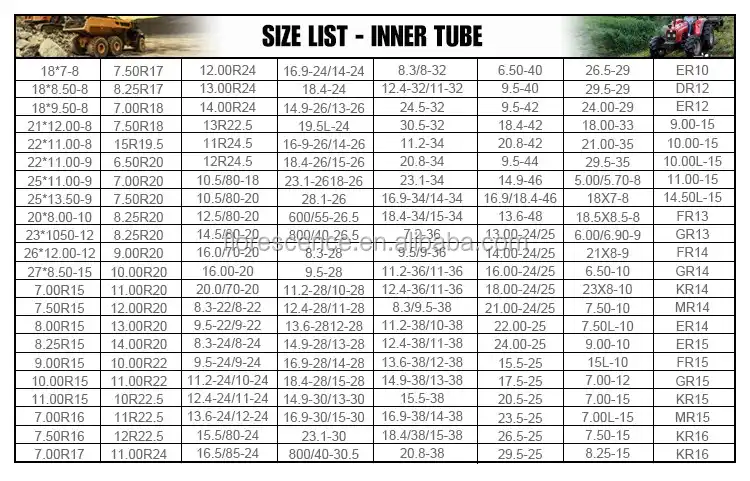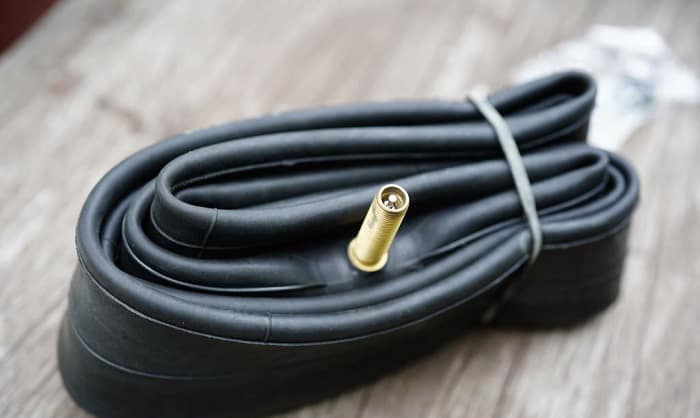Why Inner Tube Size Matters
When it comes to ensuring a smooth and safe ride, selecting the correct inner tube size for a bike is crucial. Using an incorrect inner tube size can lead to a range of issues, including reduced tire performance, increased risk of punctures, and compromised bike handling. In fact, a study by the National Bicycle Dealers Association found that incorrect inner tube size is a leading cause of tire failures, resulting in costly repairs and potential safety hazards. By choosing the right inner tube size for your bike, you can enjoy a more comfortable ride, improved tire longevity, and enhanced overall cycling experience. Whether you’re a seasoned cyclist or just starting out, understanding the importance of inner tube sizes for bikes is essential for getting the most out of your ride.
Understanding Bike Tire Measurements
When it comes to selecting the correct inner tube size for a bike, understanding bike tire measurements is crucial. There are three key measurements to consider: diameter, width, and valve type. The diameter of a bike tire refers to the distance from one side of the tire to the other, measured in inches or millimeters. The width of a bike tire, on the other hand, refers to the distance from one edge of the tire to the other, also measured in inches or millimeters. Valve type refers to the type of valve stem used on the tire, with common types including Schrader, Presta, and Dunlop. To determine these measurements, riders can check the tire sidewall, which typically displays this information in a standardized format. For example, a tire sidewall may read “700x23c,” indicating a diameter of 700mm and a width of 23mm. By understanding these measurements, riders can ensure they select the correct inner tube size for their bike, which is essential for optimal tire performance and safety. With the right inner tube size, riders can enjoy a smoother ride, improved tire longevity, and enhanced overall cycling experience.
How to Determine Your Bike’s Inner Tube Size
Determining the correct inner tube size for a bike can seem daunting, but it’s a crucial step in ensuring optimal tire performance and safety. To get it right, follow these simple steps: First, check the tire sidewall for the recommended inner tube size, which is usually indicated by a series of numbers and letters. Next, consult the bike’s manual or manufacturer’s website for specific inner tube size recommendations. If this information is not available, measure the tire diameter and width using a ruler or caliper. Compare these measurements to the inner tube size chart to find the correct match. It’s also important to consider the valve type, as Schrader, Presta, and Dunlop valves require different inner tube sizes. By following these steps, riders can ensure they select the correct inner tube size for their bike, which is essential for achieving optimal tire performance and minimizing the risk of punctures. Remember, using the correct inner tube size is critical for a safe and enjoyable ride, and can make all the difference in getting the most out of your bike.
Inner Tube Size Charts: A Quick Reference Guide
When it comes to selecting the correct inner tube size for a bike, having a comprehensive reference guide can be incredibly helpful. The following chart lists common bike tire sizes and their corresponding inner tube sizes, making it easy for riders to find the correct size for their bike. Remember, using the correct inner tube size is crucial for optimal tire performance and safety, so take the time to consult this chart and ensure you’re getting the right fit.
| Tire Size | Inner Tube Size |
|---|---|
| 700x23c | 700×23-25c |
| 700x28c | 700×28-32c |
| 26×1.75 | 26×1.75-2.125 |
| 27.5×2.2 | 27.5×2.2-2.5 |
| 29×2.3 | 29×2.3-2.5 |
This chart is not exhaustive, but it covers some of the most common bike tire sizes and their corresponding inner tube sizes. When in doubt, always consult the bike’s manual or manufacturer’s website for specific inner tube size recommendations. By using this chart as a reference guide, riders can ensure they’re getting the correct inner tube size for their bike, which is essential for achieving optimal tire performance and minimizing the risk of punctures. Remember, inner tube sizes for bikes vary widely, so take the time to get it right.
Popular Inner Tube Sizes for Different Bike Types
When it comes to selecting the correct inner tube size for a bike, understanding the most common sizes for different types of bikes can be incredibly helpful. Here, we’ll explore the popular inner tube sizes for road bikes, mountain bikes, and hybrid bikes, as well as provide examples of popular bike models that use each size.
Road bikes typically use inner tube sizes ranging from 700×23-25c to 700×28-32c. Examples of popular road bike models that use these sizes include the Trek Emonda, Specialized Tarmac, and Cannondale SuperSix. These inner tube sizes provide a snug fit for the narrow tires used on road bikes, ensuring optimal performance and minimizing the risk of punctures.
Mountain bikes, on the other hand, often require larger inner tube sizes to accommodate their wider tires. Common inner tube sizes for mountain bikes include 26×1.75-2.125, 27.5×2.2-2.5, and 29×2.3-2.5. Examples of popular mountain bike models that use these sizes include the Trek Fuel EX, Specialized Stumpjumper, and Giant TCX. These larger inner tube sizes provide the necessary clearance for the wider tires used on mountain bikes, ensuring a comfortable ride and minimizing the risk of punctures.
Hybrid bikes, which combine elements of road and mountain bikes, often use inner tube sizes that fall somewhere in between. Common inner tube sizes for hybrid bikes include 700×35-40c and 27×1.25-1.5. Examples of popular hybrid bike models that use these sizes include the Trek FX, Specialized Sirrus, and Cannondale Quick. These inner tube sizes provide a comfortable fit for the slightly wider tires used on hybrid bikes, ensuring a smooth ride and minimizing the risk of punctures.
By understanding the popular inner tube sizes for different types of bikes, riders can ensure they’re getting the correct size for their bike. Remember, inner tube sizes for bikes vary widely, so take the time to get it right. Using the correct inner tube size is crucial for optimal tire performance and safety, so don’t hesitate to consult this guide when selecting an inner tube for your bike.
What to Consider When Buying Inner Tubes
When purchasing inner tubes for your bike, there are several key factors to consider to ensure you get the right one for your needs. These factors can significantly impact the performance and durability of your inner tube, so it’s essential to understand what to look for.
Material is one of the most critical factors to consider when buying inner tubes. Inner tubes can be made from a variety of materials, including rubber, latex, and butyl. Rubber inner tubes are the most common and offer a good balance of durability and affordability. Latex inner tubes, on the other hand, are lighter and more flexible, making them ideal for high-performance road bikes. Butyl inner tubes are the most durable and resistant to punctures, making them a popular choice for mountain bikes and hybrid bikes.
Thickness is another important factor to consider when buying inner tubes. Thicker inner tubes provide added protection against punctures, but may also increase the weight and rolling resistance of your tires. Thinner inner tubes, on the other hand, offer improved performance and reduced weight, but may be more prone to punctures.
Valve type is also an essential consideration when buying inner tubes. There are two main types of valves: Presta and Schrader. Presta valves are commonly used on road bikes and are known for their high-pressure capabilities. Schrader valves, on the other hand, are more commonly used on mountain bikes and hybrid bikes and are known for their ease of use.
In addition to material, thickness, and valve type, there are several other factors to consider when buying inner tubes. These include the tube’s diameter, width, and stem length, as well as any special features such as puncture-resistant coatings or reinforced sidewalls.
By considering these key factors, riders can ensure they get the right inner tube for their bike, which is essential for optimal tire performance and safety. Remember, inner tube sizes for bikes vary widely, so take the time to get it right. Using the correct inner tube size and considering these key factors can make all the difference in your riding experience.
Top-Rated Inner Tubes for Different Bike Types
When it comes to selecting the best inner tube for your bike, there are many options available on the market. To help you make an informed decision, we’ve reviewed and recommend top-rated inner tubes for different bike types. Whether you’re a road bike enthusiast, a mountain bike thrill-seeker, or a hybrid bike commuter, we’ve got you covered.
For road bikes, the Schwalbe SV18 Inner Tube is a popular choice among cyclists. Made from high-quality butyl rubber, this inner tube provides excellent puncture resistance and durability. With a weight of just 65 grams, it’s also incredibly lightweight. The Continental Race 28 Inner Tube is another top-rated option for road bikes, offering a perfect balance of performance and durability.
For mountain bikes, the Specialized Turbo Tube is a top pick. Designed for high-performance mountain biking, this inner tube features a unique puncture-resistant coating that reduces the risk of flats. The Maxxis Inner Tube is another popular option for mountain bikes, offering a durable and reliable ride.
For hybrid bikes, the Michelin A1 Airstop Inner Tube is a great choice. Made from a durable butyl rubber compound, this inner tube provides excellent puncture resistance and durability. The Bontrager Inner Tube is another top-rated option for hybrid bikes, offering a comfortable and reliable ride.
When selecting an inner tube, it’s essential to consider the specific needs of your bike and riding style. By choosing a top-rated inner tube that’s designed for your bike type, you can ensure optimal performance, durability, and safety. Remember, inner tube sizes for bikes vary widely, so be sure to select an inner tube that’s compatible with your bike’s tire size.
Conclusion: Finding the Perfect Inner Tube for Your Bike
In conclusion, selecting the correct inner tube size for your bike is crucial for optimal tire performance, safety, and durability. By understanding the importance of inner tube size, measuring your bike’s tire diameter and width, and considering key factors such as material and valve type, you can ensure a smooth and enjoyable ride.
To recap, here’s a final checklist to help you find the perfect inner tube for your bike:
- Check your bike’s manual or tire sidewall for the recommended inner tube size.
- Measure your bike’s tire diameter and width to ensure accuracy.
- Consider the type of bike you have and the corresponding inner tube size.
- Choose an inner tube made from a high-quality material that suits your riding style.
- Select an inner tube with the correct valve type for your bike.
By following these steps and considering the key factors outlined in this article, you can find the perfect inner tube for your bike and enjoy a safe and enjoyable ride. Remember, inner tube sizes for bikes vary widely, so take the time to get it right. With the right inner tube, you can optimize your bike’s performance and enjoy the ride of your life.








